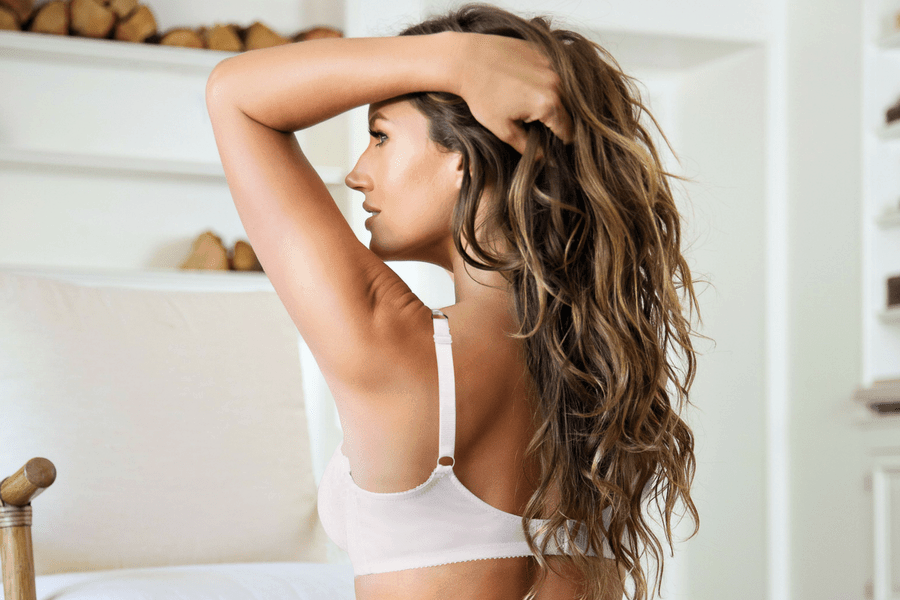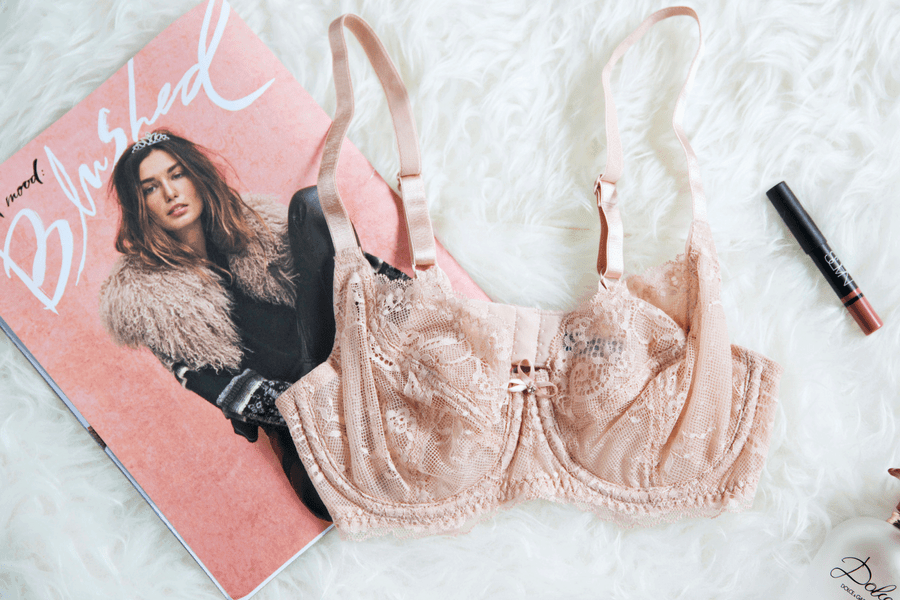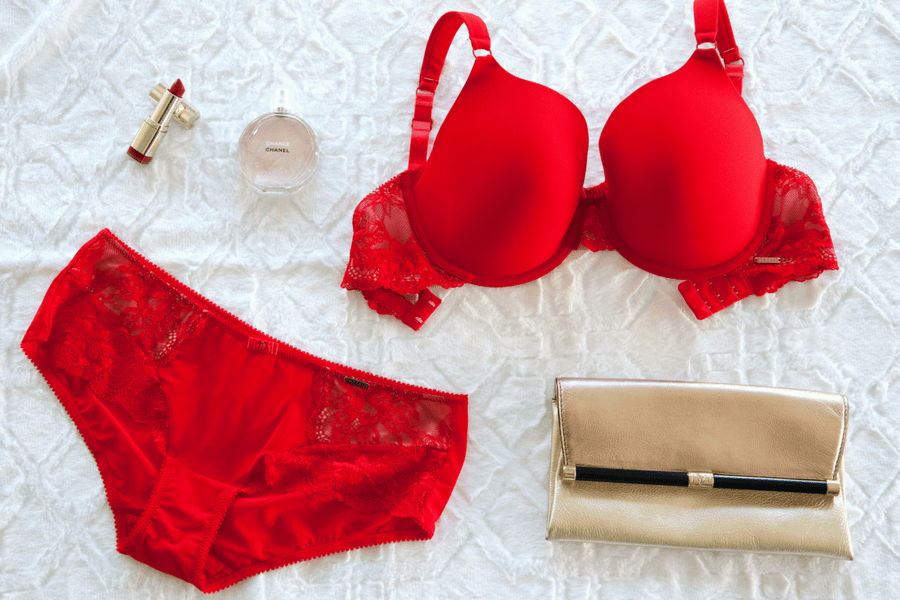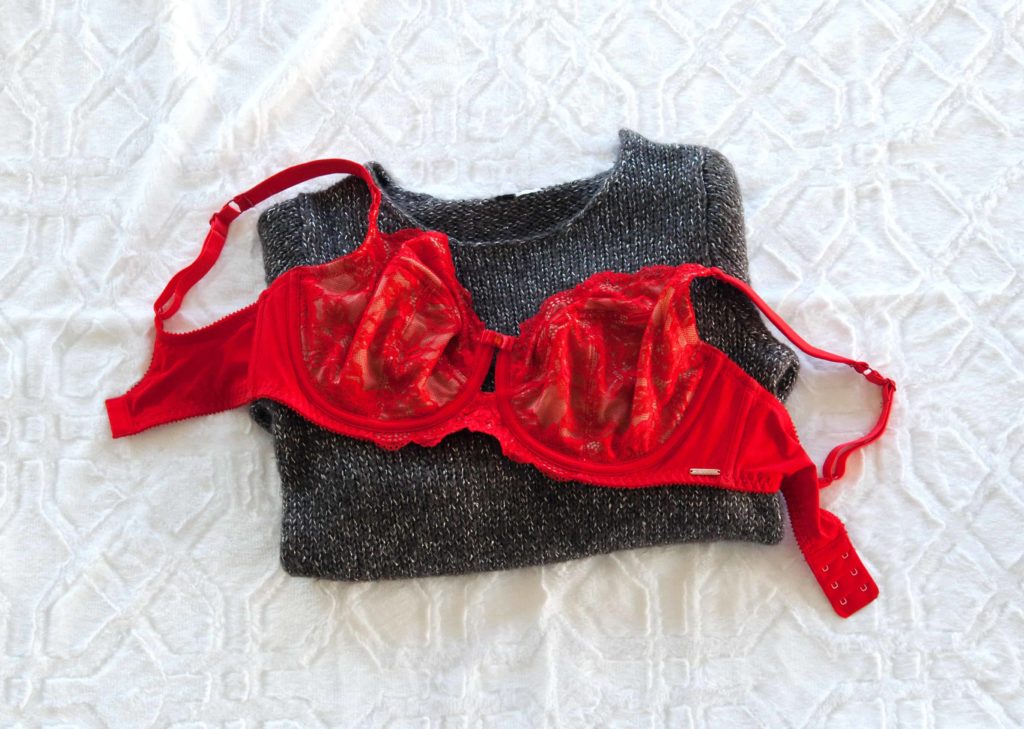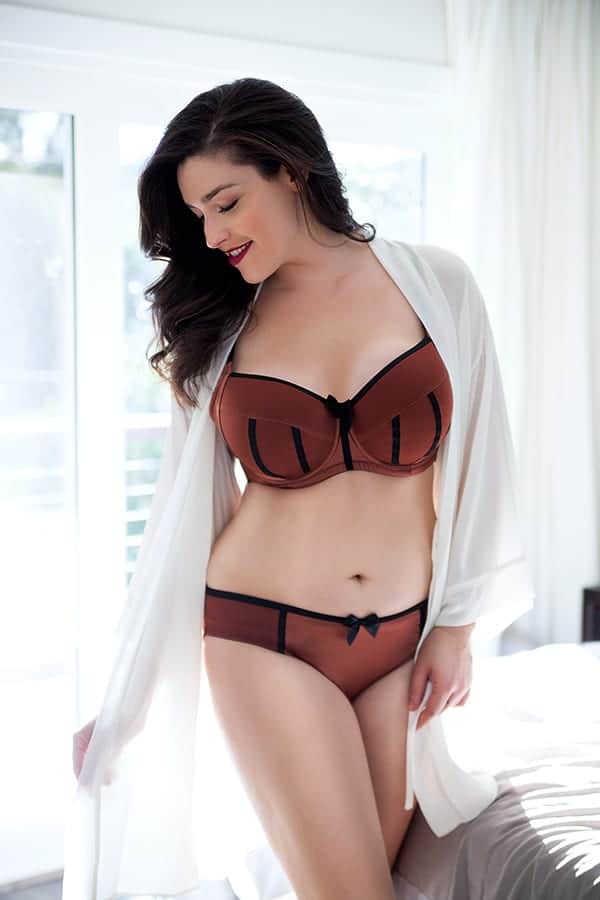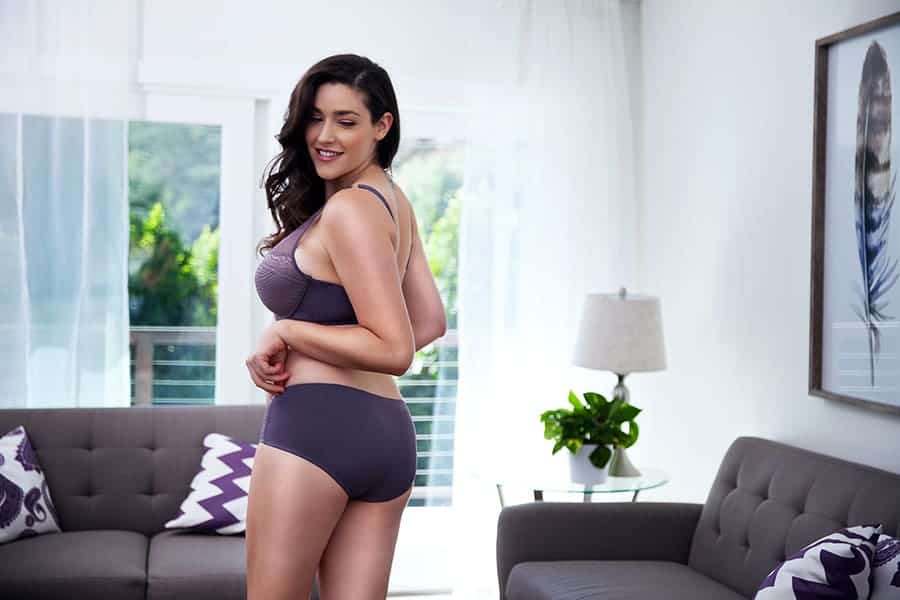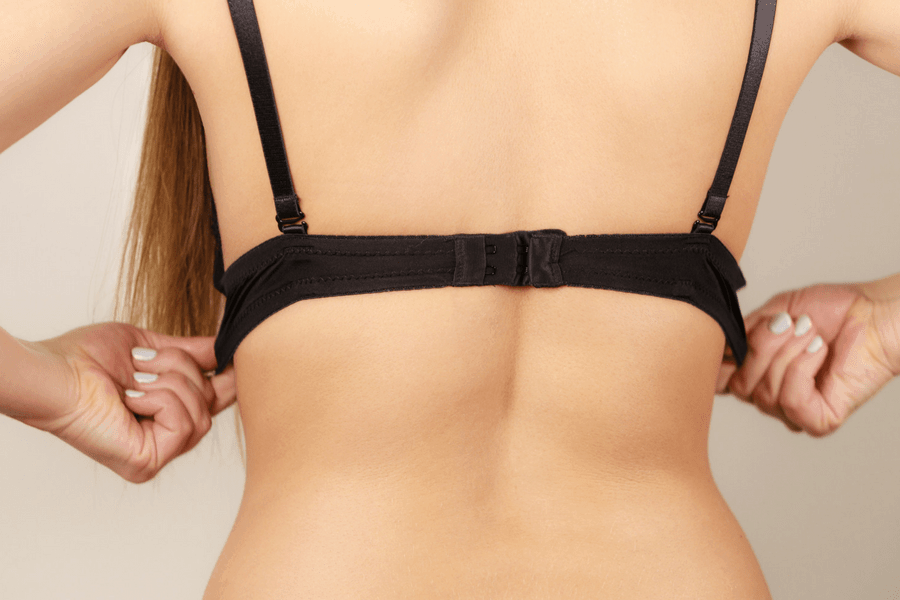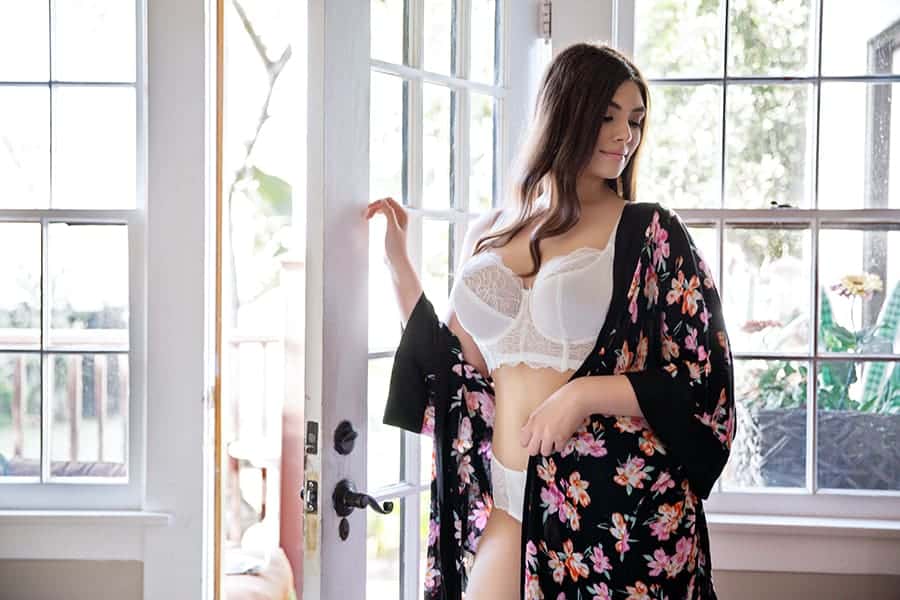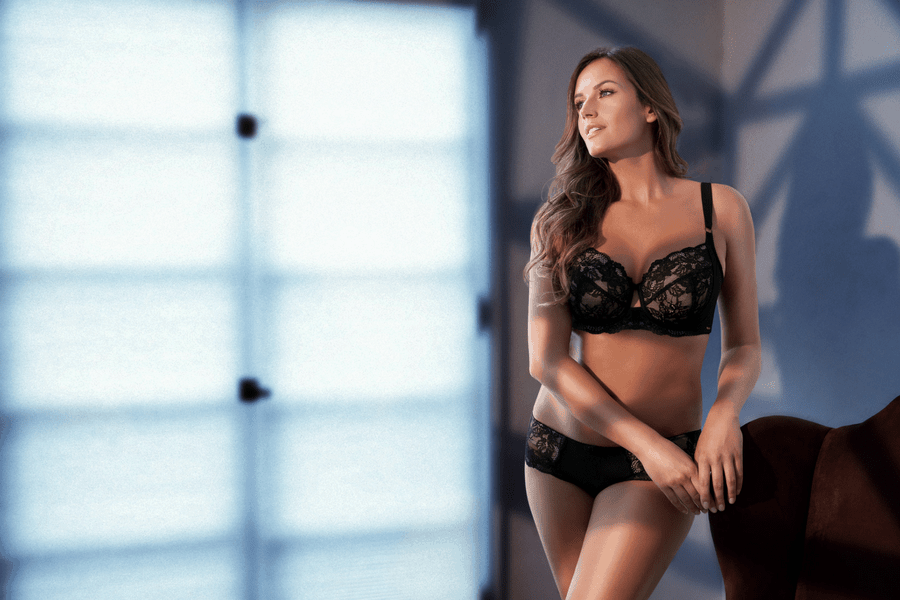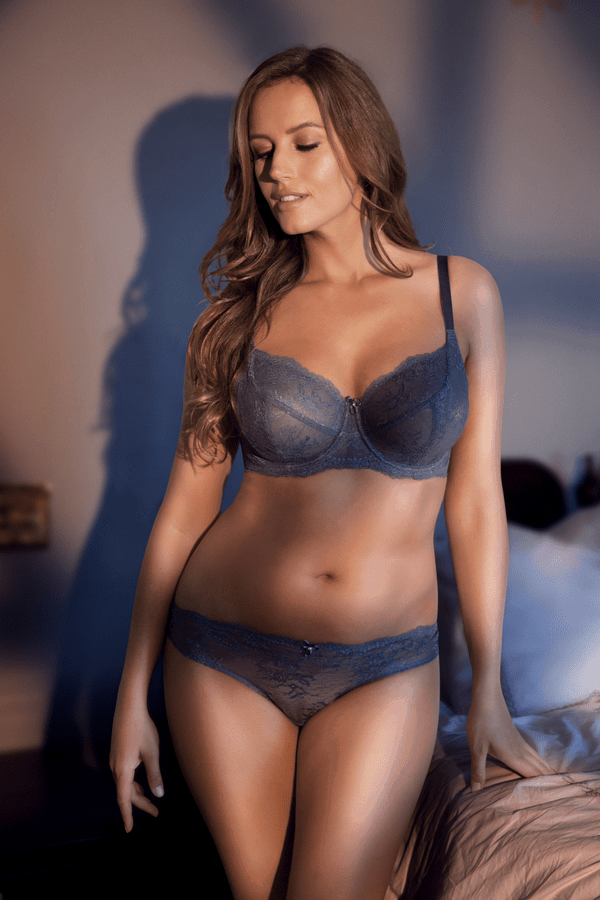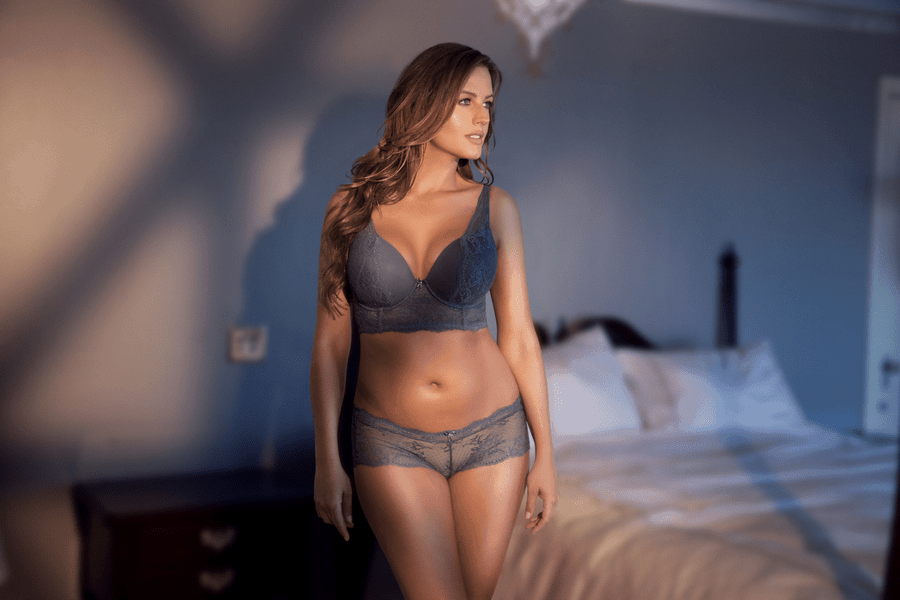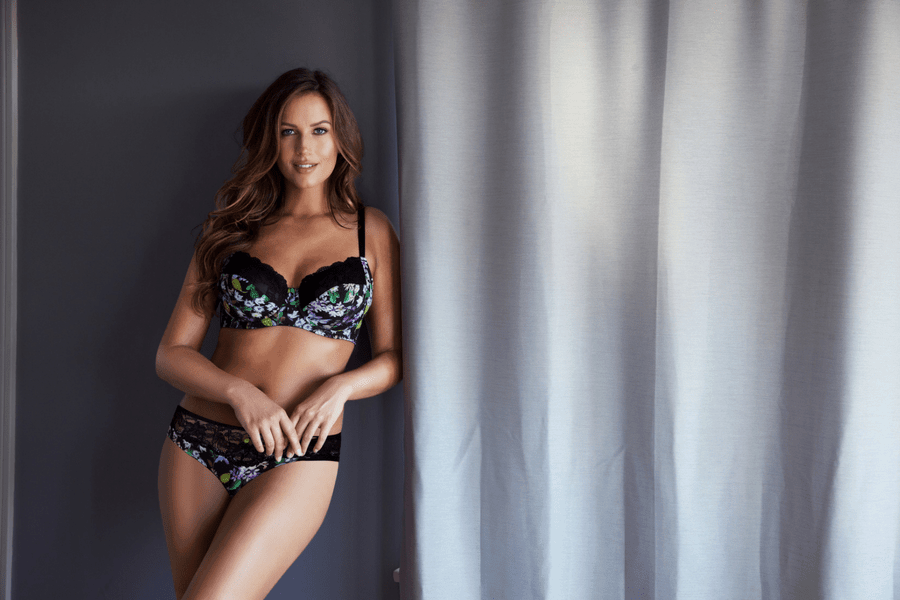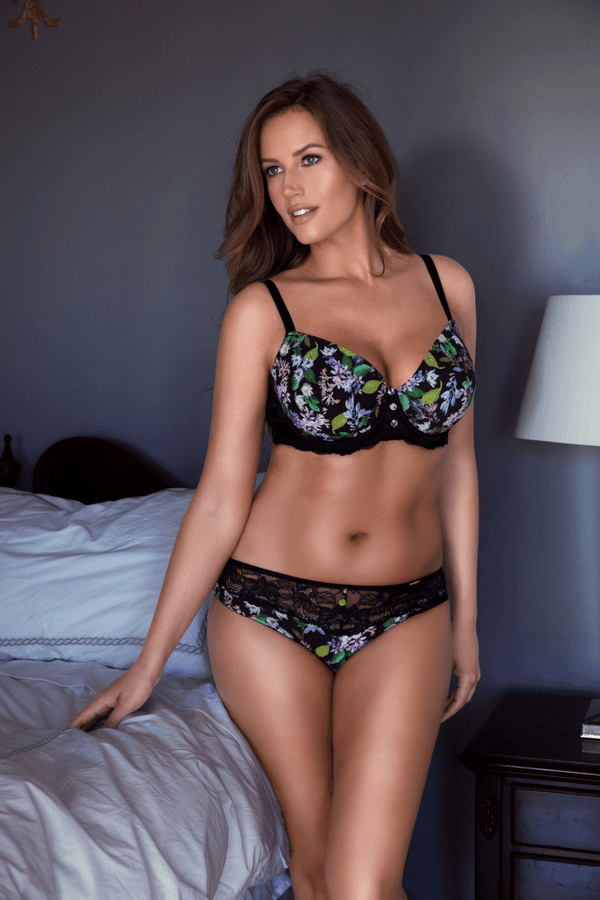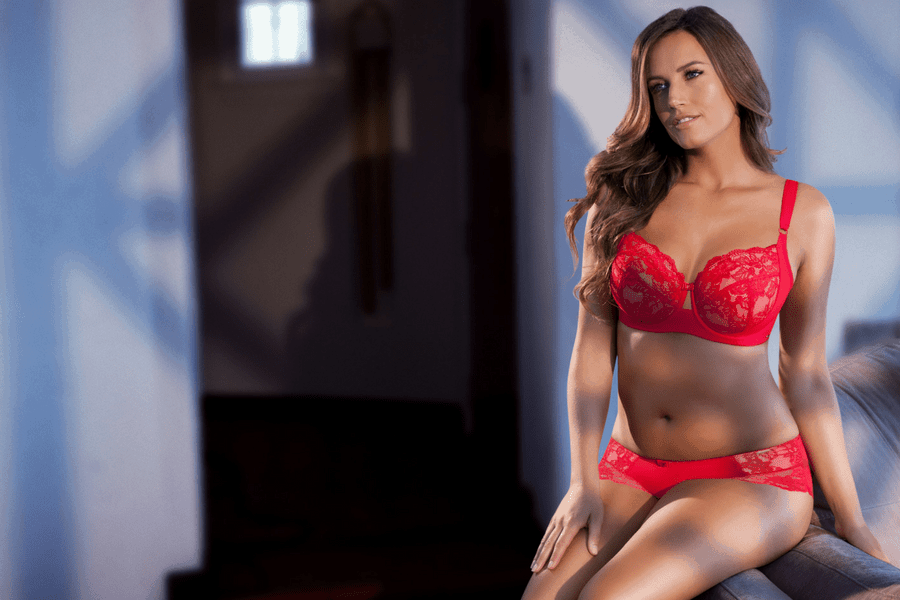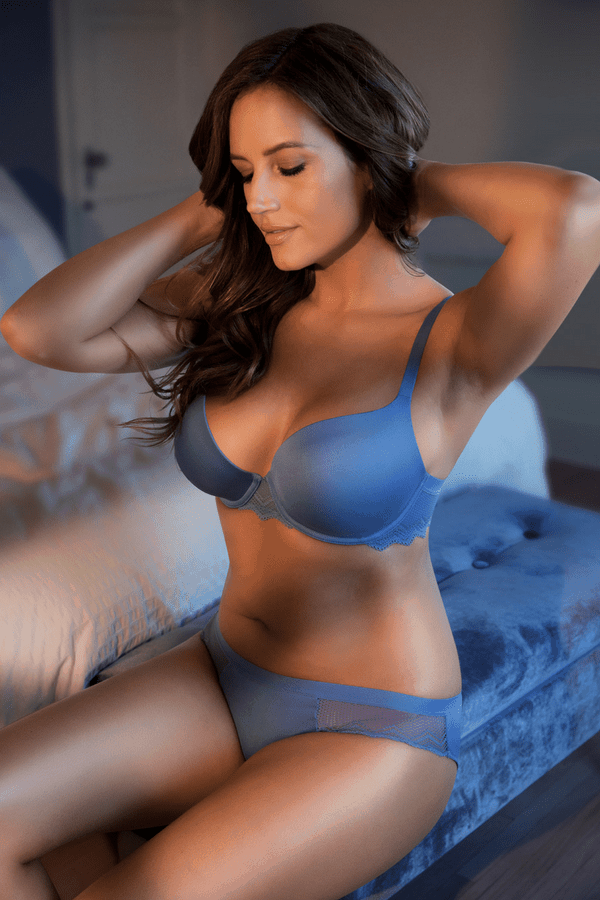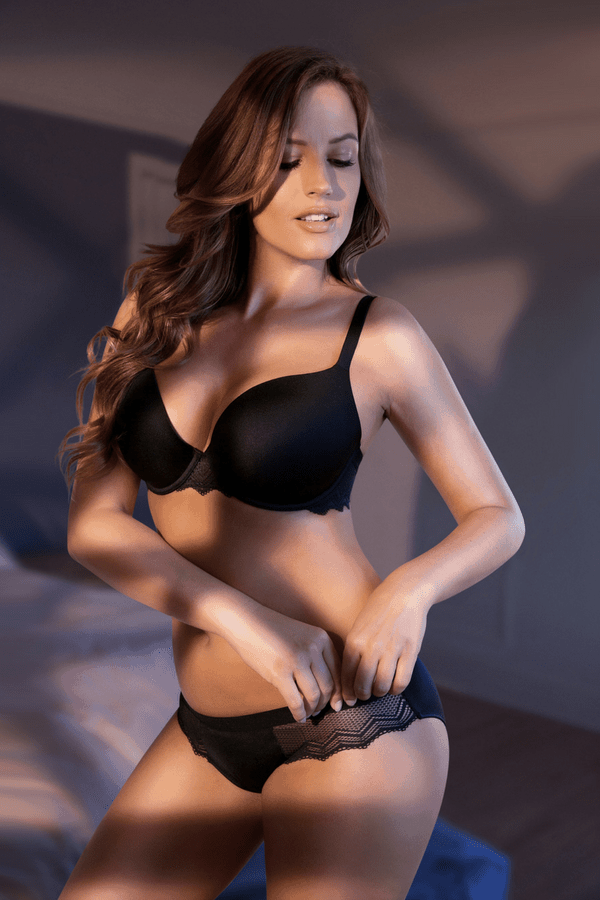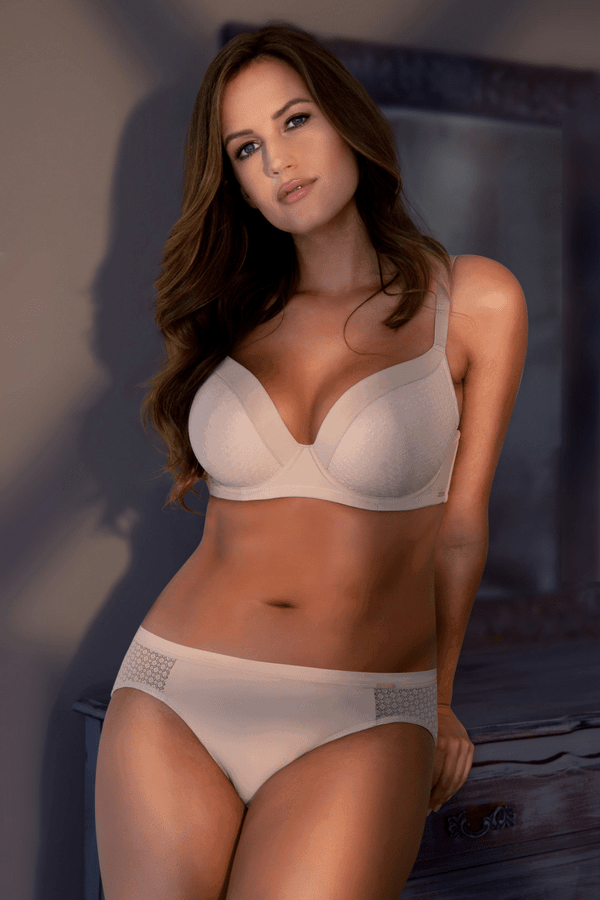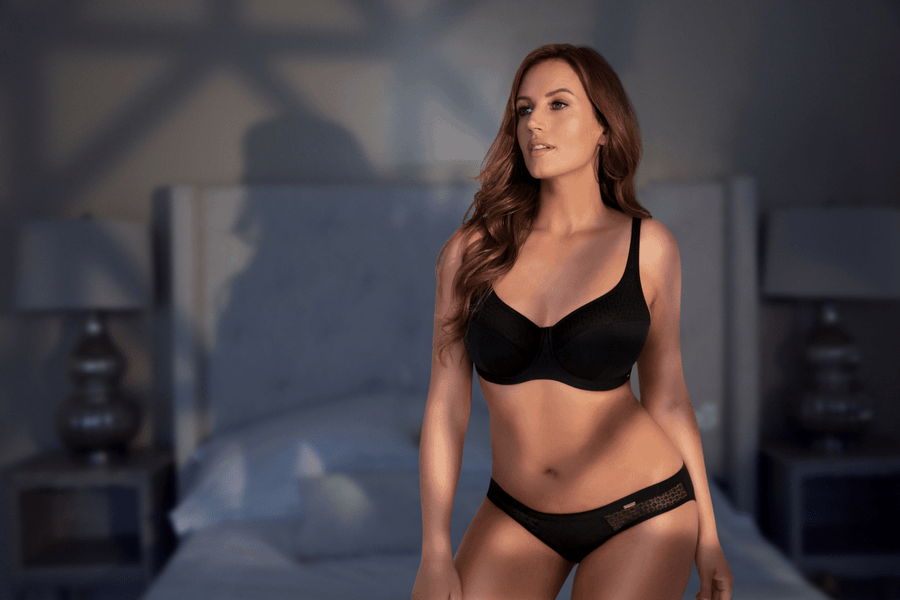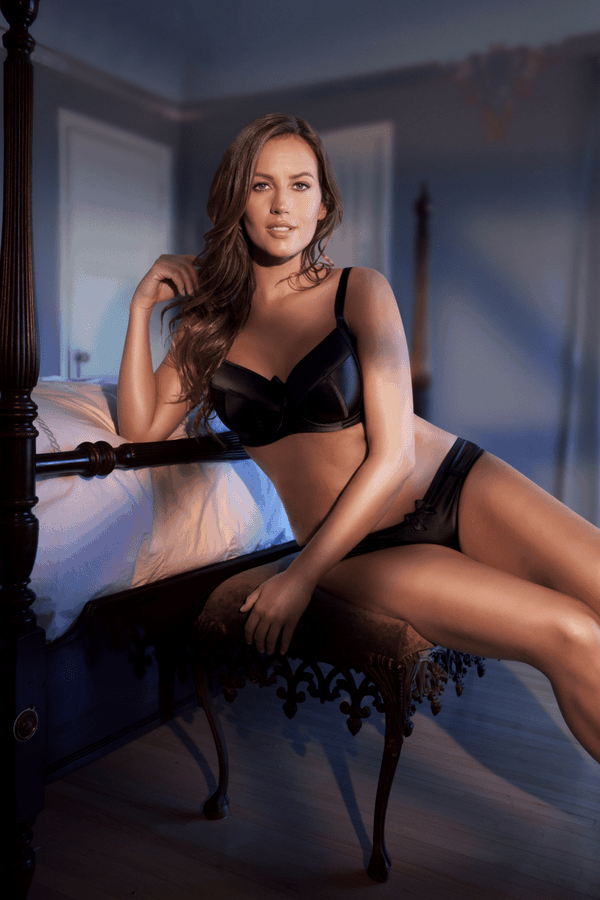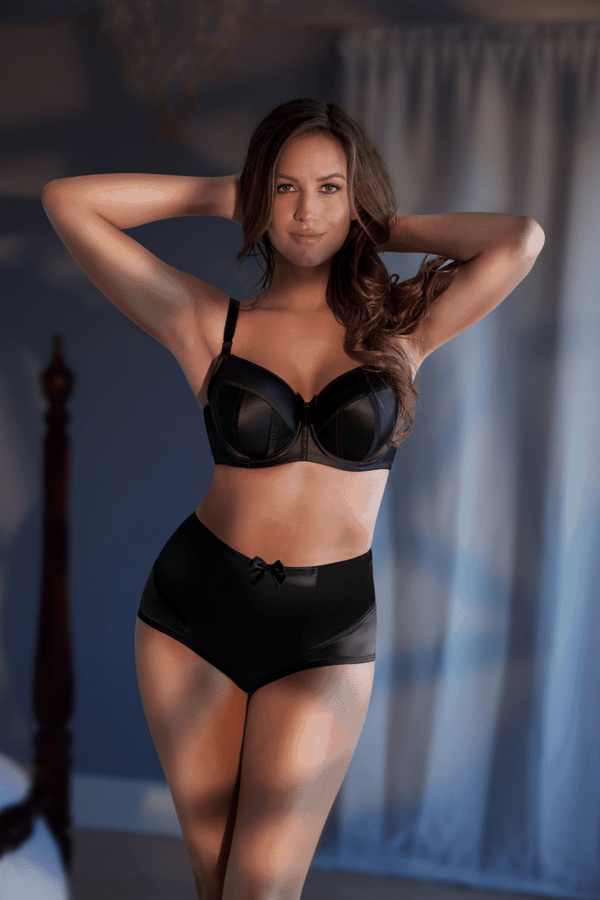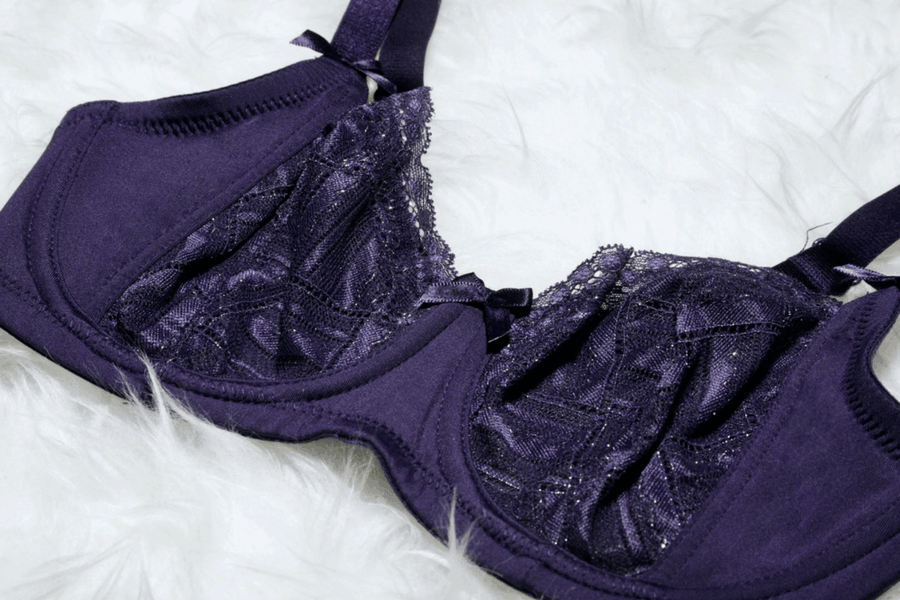If you’re unsure of what bra band size you need, a tape measure is a good place to start. Wrap it horizontally around your ribcage, just underneath your breasts where your bra band would sit. Pull it as firmly as is comfortable, and read the measurement in inches. Now you’ve got a figure to work from, but here’s the thing – that number might be your band size, or it might not be. Numerical measurements can only tell you so much about your body.
Of course, there is some correlation between body size and band size, but it’s not as simple as saying a clothing size 8 = a 32 bra band, a clothing size 10 = a 34 bra band and so on. Two women can both measure the same around the ribcage and yet wear (well-fitting) bras that are one or even two band sizes different.
Here are 3 other factors that come into play when determining your bra band size:
Body Composition
The majority of the support in a bra comes from the band, and to be able to offer that support it needs to fit rather snugly so it’s not slipping and sliding around. If your ribcage is soft and squishy, your band will need to hug you a little more tightly to get that same, firm fit. In other words, you’ll need a smaller band size than someone whose ribcage isn’t as easily compressible.
So what affects how ‘squishable’ your ribcage is? One thing is the amount and location of body fat – is there a layer cushioning your ribcage, or do you not carry much fat here? Another is bone structure – do you have a wide or narrow ribcage? Muscle mass is important too. It’s harder to compress than fat, so if you are regularly exercising the muscles that surround your upper chest, your band size may be larger than that of someone with a different or less-intensive workout routine.
Personal Preference
Even with identical measurements and very similar body types, two people can still wear a different band size. That’s because a part of it is simply personal preference. One person’s ‘comfortably firm’ may be another person’s ‘ouch, this is too constrictive!’.
A bra band does need to fit snugly in order to provide support. However, it’s also important that you’re comfortable. If it’s so tight that you’re finding it irritating or painful, do size up. You should always feel like you can breathe and move about easily in your bra.
You may also just not feel like heavy-duty support is a priority for you, particularly if your cup size is at the smaller end of the scale. In this case, you can ‘get away with’ a band that’s slightly looser.
Related: Why Do So Many Women Wear The Wrong Bra Size?
Brand Differences
If you’ve got a few minutes to spare and are feeling bored, try this little experiment: gather all of your bras with the same size label and lay them out flat to compare the bands. Are they the same length? If you own bras from a mixture of brands, you’ll almost certainly find that some are longer or shorter than the others.
This is because there’s no universal standard for bra sizing that all brands adhere to. Even the way they will tell you to calculate your bra size differs, with some sizing guides saying that if you measure 34” around the ribcage you should start by trying a 34 band size, and others telling you to add 4 inches and try a 38 band size. This means that some brands’ 38 bands will actually stretch to 38”, and others only to 34”. There can be quite a difference!
Remember:
Confused? It would be understandable. The best way to work out the band size you need in a particular bra is to head to a boutique and try a few on. Remember that once you’ve found your ideal fit in the cups, if you move up or down a band size you’ll need to do the opposite in the cup size. It’s called sister sizing and there’s a full explanation and handy conversion chart here.
As always with bra sizing, when in doubt consider getting a professional fitting. You may be surprised at the band size they suggest for you to try, but if you give it a go you may be even more surprised at how the bra looks and feels on!
Related: The 7 Golden Rules Of Lingerie Shopping
We Highly Recommend
Whether you’re shopping for new everyday bras or lingerie for a special occasion, it’s always a good idea to seek out a second opinion. We know how hard it is to find bras that fit well and feel good, especially when you’re doing it on your own. If you’ve ever felt unsure about your bra size or you just don’t know where to go to find good bras, it’s time to let a bra fitter help.
Many specialty lingerie boutiques offer bra fittings. Their expert bra fitters will take the pain and frustration out of bra shopping and do all the work for you. Even better, their product knowledge can save you time and money. Plus, they know where all of the best bras are hiding.
If you’ve struggled with finding bras in the right size, it’s time to make a change. Visit our specialty store locator to find a store near you and schedule an appointment.
Happy bra shopping!

